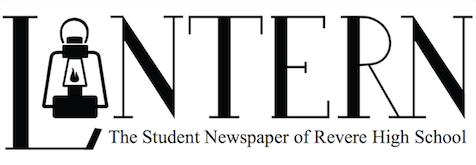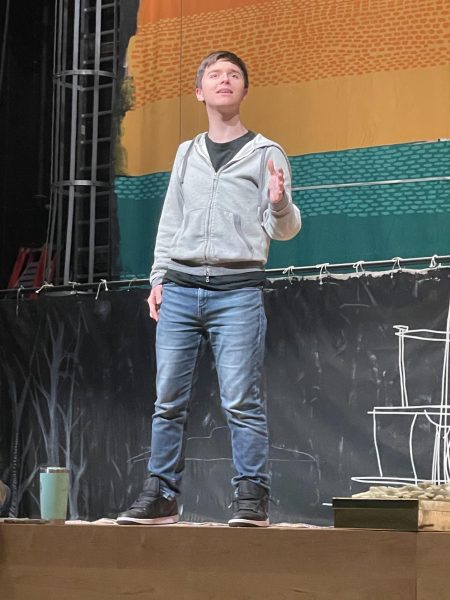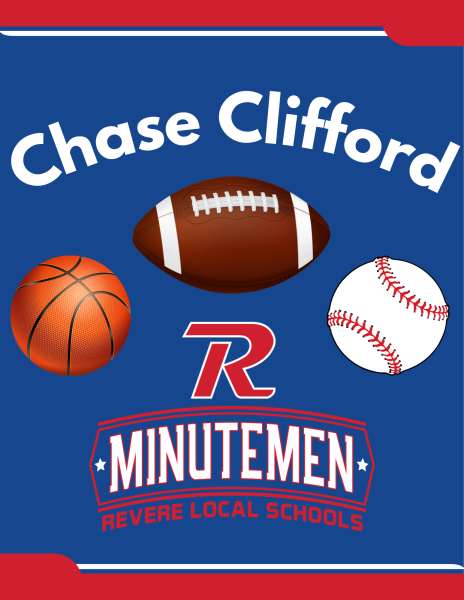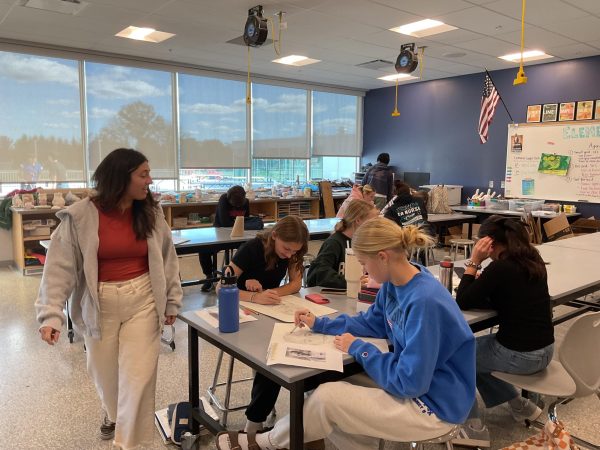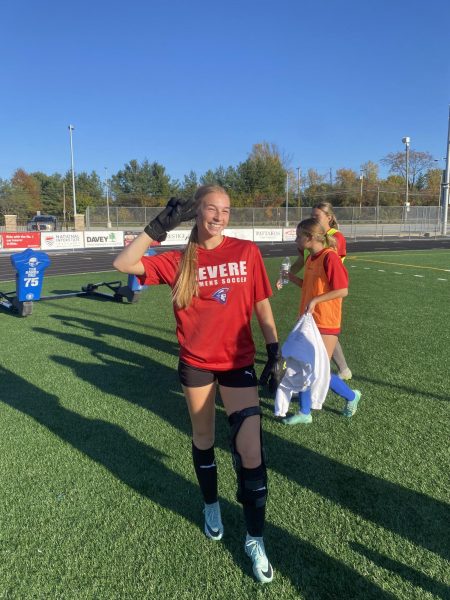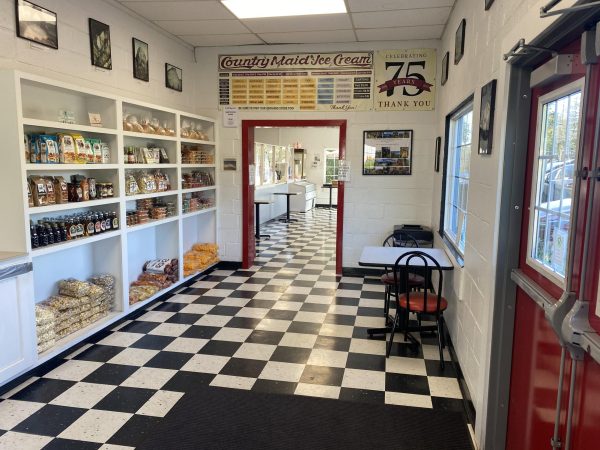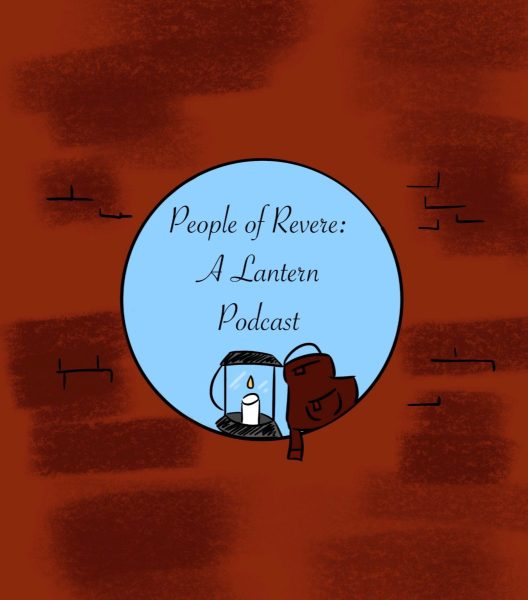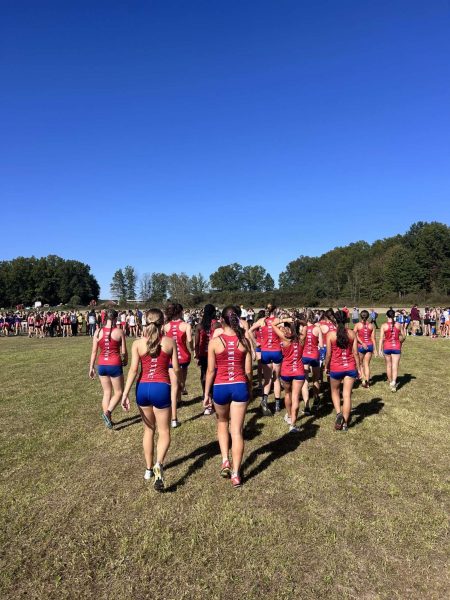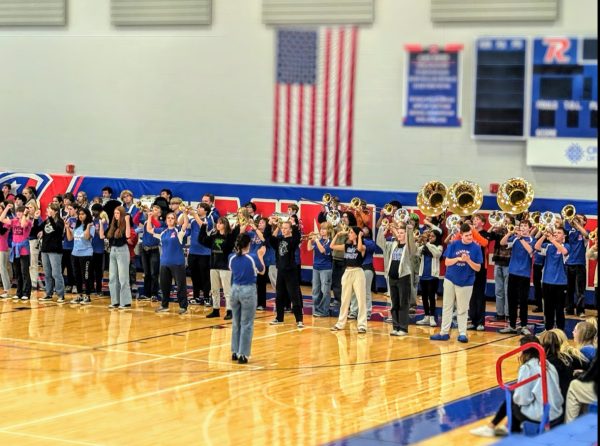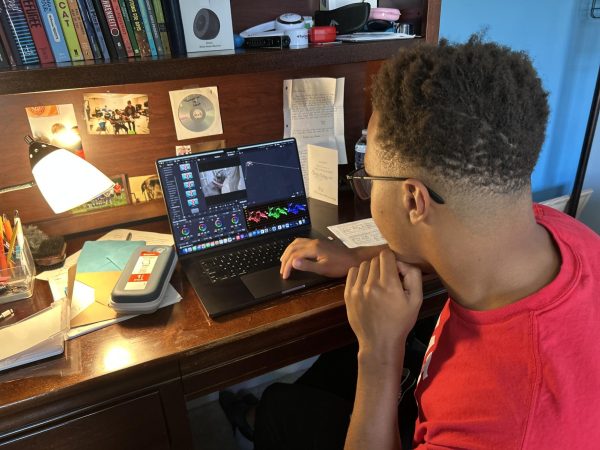Teacher brings innovative projects to the classroom
After collecting data from the surveys, the students will analyze their results and create graphs.
Revere students have many different reasons to diligently check their email inboxes: awaiting responses from colleges, scholarships, class updates and more. One additional reason has been an influx of emails with the subject line “stats project” or “survey” that contain a short questionnaire that asks respondents to input data about a specific topic. These emails all originate from the same source: Stephanie Mason’s Statistics class.
Mason, a teacher at Revere who teaches basic Algebra 2, Trigonometry and Statistics, has been teaching for thirty-one years and spent the past twenty-four at Revere.
Mason describes her initial path in college.
“I started out in Marine Biology. I was [also] doing some volunteer work in the inner city and I was tutoring them, and I really enjoyed that, so I just kept taking math classes,” Mason said.
Once on the math-oriented track, Mason discovered a possible career path while volunteering as a tutor.
“I still wasn’t sure I was going to be a teacher. [I was] going through a math program together [with one of my friends], and he decided he was going to try to do actuary science,” Mason said.
Mason defines what actuary science means as a profession, and why she decided against it.
“What they do is they write all the formulas for the insurance companies to calculate your insurance rates. [My friend] was trying to talk me into doing that, which sounded a little interesting but boring,” Mason said.
Mason describes her ultimate path through college and through her career.
“I just kept taking math classes, got my math degree, was still working in the inner city tutoring and decided to go back to school to be a teacher. I got my masters in instructional technology later. I taught in inner city Columbus and Ellet high school in Akron, and the rest of my career has been here at Revere,” Mason said.
Mason explains what she enjoys about teaching at Revere.
“I work with amazing students. I enjoy all levels of students. My colleagues are phenomenal, and I honestly couldn’t ask for a better place to be,” Mason said.
While teaching at Revere, Mason has taught many different classes under the math umbrella. For the past two years, Mason has given her Statistics class a data analysis and surveying project. Mason describes the generalities of the project.
“Typically, what I have the students do is design a survey that’s related to some interest that they have. It could be a sport that they’re interested in, a hobby or just something in general that they’re curious about,” Mason said.
Mason details how the project has changed over just two years.
“They design a survey, then they push that survey out. It used to be on paper, now they’re doing different platforms like Snapchat, Instagram [and] some do email still,” Mason said.
In the data analysis portion of the project, Mason instructs students to pinpoint certain types of data and survey questions.
“They gather up information, then they analyze the information, and they’re required to do a graph for every question that they asked and they have to do at least one histogram to calculate the mean, median, mode, standard deviation and coefficient of variation of that data as well,” Mason said.
Mason describes how students present and turn in their completed projects.
“Then, they do a screen recording, [and] they create slides to share their information,” said Mason.
Mason believes that the main takeaway from the project is an application of ideas that they learn throughout the course.
“One thing that we struggle with in some of our foundational courses like Algebra 1 and Algebra 2, it’s difficult for us to have application of those. They’re really building foundational skills for future math classes. But statistics, when they do a stats project, they start seeing the relevance of what they’re doing,” Mason said.
While analyzing data requires directly Statistics-related skills, Mason describes how the survey portion itself contributes to students’ comprehension.
“One of the coolest things that I think they learn is how to actually design a good survey. They think it’s going to be really easy, but they have to really put some thought into how they design the questions so that people answer them the way they are intended to be answered. You can’t leave room for interpretation,” Mason said.
Many different types of data must be collected by students, including qualitative, quantitative, nominal internal, ratio and ordinal.
Mason describes a standout example of a student utilizing their own specific interest for the project.
“I had a young lady that was really into archery. She wasn’t sure what to do her project on. [I was] blown away because I’ve never had a student that did archery. [The student said] ‘if I survey the Revere students, they’re not going to know anything,” so I told her [to] survey her own community,” Mason said.
Mason encourages her students to reach outside of the Revere population with their survey.
“She pushed it out to people that compete in archery all across the country and even some that were outside of the country. It was really cool; she was able to ask them questions like the amount of time that they put into practice and how far they travel for their competitions, [and] gathering some really interesting data,” Mason said.
Senior Molly Gilreath chose to do her Statistics project on sleep habits, including aspects such as insomnia, dreams and sleep paralysis. Gilreath describes why she chose this topic.
“It’s something that I think is very interesting to me, first of all because I think dreams are interesting, and I used to have a lot of issues with insomnia and sleep paralysis. I still do, but it was always a big thing for me,” Gilreath said.
Gilreath describes some of the data she received related to reported hours slept per night.
“It’s very interesting seeing everyone’s results looking at all of the data. Most people did actually get a pretty decent amount of sleep. On the weekend [the average] is 9-10 hours, but during school days it was 5-6 hours of sleep. It’s about the amount of sleep that I get per night,” Gilreath said.
Because dreams are included as part of the survey, Gilreath asked recipients to rank their ability to remember their dreams.
“One thing I found interesting is as far as people’s reported ability to remember their dreams, it was mostly even. The highest was 5-6, but there’s not a striking [difference],” Gilreath said.
Gildreath sent her survey through email, as well as other methods to get as many responses as possible.
“I started off by sending it through social media and discord. There were also some open-ended responses that of course people took advantage of, but I’m not surprised, obviously,” Gilreath said.
Gilreath describes Mason as a teacher.
“I think she’s a great teacher, she’s very nice and she’s always willing to answer everyone’s questions. I think it was one of the easier math classes I’ve had,” Gilreath said.
Senior Alexis Zapisek also created a survey, but she based her questions around sports and wellness.
“I did my project on sports-related topics and if a person has been injured, including how many days of physical therapy that they have completed. I chose this topic because I myself am an athlete and have been in and out of physical therapy my entire high school career,” Zapisek said.
Zapisek describes her takeaways from completing the project.
“I’ve learned how to properly analyze data and how to collect it and make pie charts and several graphs,” Zapisek said.
Zapisek describes her opinion of Mason.
“I love Ms. Mason’s class and her as a teacher. She is the sweetest, most genuine teacher I have ever met. I will truly miss her so much,” Zapisek said.
Although a Revere student may be initially dismissive of surveys appearing in their inbox, Mason’s Statistics students send off their surveys in order to complete their projects and learn possibly interesting information along the way.
